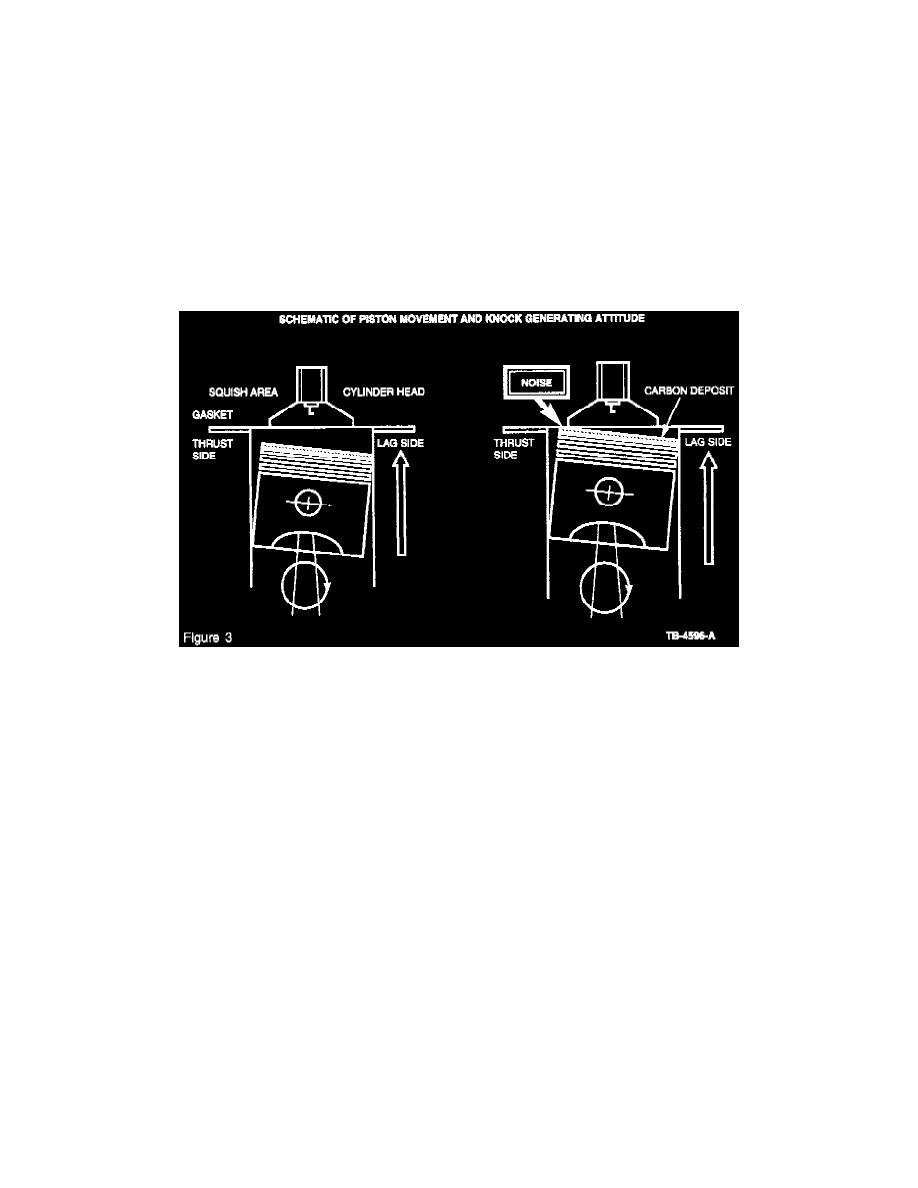Probe V6-153 2.5L DOHC (1994)

NOTE:
WHEN CONDUCTING ENGINE NOISE DIAGNOSTICS, ALWAYS CHECK THE ENGINE OIL AND COOLANT LEVELS PRIOR TO
STARTING THE ENGINE. ALSO, OBSERVE THE COOLANT TEMPERATURE TO AVOID OVERHEATING THE ENGINE.
PART NUMBER
PART NAME
D9AZ-19579-BA
Carburetor Tune-up Cleaner
OTHER APPLICABLE ARTICLES: 97-17-13
SUPERSEDES: 97-14-12
WARRANTY STATUS: INFORMATION ONLY
OASIS CODES: 497000, 499000, 702000, 702100
A. Carbon Knock
If a top of engine knock noise is heard when starting a cold engine and decreases after the engine warms up, carbon may have accumulated in the
combustion chamber and on the piston tops. Carbon accumulation reduces the clearance between the piston and cylinder head, causing contact and noise
during combustion (Figure 3). This noise can be mistaken as HLA noise. Carbon knock can be distinguished from HLA noise by increasing the engine
speed. Carbon knock noise will lessen or disappear as engine speed reaches approximately 2500 rpm. If carbon is suspected, perform the following
Carbon Cleaning Procedure.
Carbon Cleaning Procedure
1.
Bring engine to normal operating temperature, then shut engine off.
CAUTION:
PROVIDE A SEPARATE FEED TUBE FOR THIS PROCEDURE. DO NOT USE ANY OF THE VEHICLE'S VACUUM HOSES FOR FEEDING
CLEANER INTO THE ENGINE. DETERIORATION OF THE VEHICLE'S VACUUM HOSES MAY RESULT.
2.
Obtain a 610 mm (2') length of 1/8" I.D. vacuum hose for use as a feed tube for the carbon cleaner.
